Table of Contents
Most Dangerous Sharks : “Sharks are unfortunate. They’ve got a bad rep, but are they really that dangerous? After all, a cow is more likely than a shark to kill you [source: Faletto]. Nobody, however, is making films about deadly cownados. And you’re more likely to drown or be injured by your own surfboard than by a shark while you’re in the water [source: Martin].
These types of statistics are frequently used by researchers to justify sharks. Here’s a new one for you. According to the Insurance Information Institute, there will be 17,989 cases of dogs biting humans in 2021.There were only 47 unprovoked shark attacks off the coast of the United States in the same year [source: ISAF]. That means you’re 383 times more likely than a shark to be bitten by man’s best friend.
Even the prospect of a shark attack, thanks to films like “Jaws” and sensational news reports, scares us. Sharks represent the unknown and unknowable to many people. While we can forgive some of those nearly 18,000 dogs for biting us, sharks lack emotional expression, making them easy to portray as mindless man-eaters.
Statistics can sometimes back up our fears. In the past few years, there have been a few more shark attacks, but this is probably because more people are enjoying water sports than because sharks are getting more hungry.
Any shark larger than 6 feet (1.8 meters) is a potential threat to humans due to its size and the adaptations it has, such as more developed jaws and stronger teeth, that have allowed it to grow to such a large size [sources: Burgess, Ritter]. These sharks aren’t specifically looking for human flesh, but if they do get a taste, they could cause a lot of damage.
While the most dangerous shark may always be the one swimming right toward you, it’s worth remembering that only about 10% of the nearly 400 shark species identified have been linked to a human attack [source: Martin].
Which of the nearly 30 species that have been attacked is the most dangerous? To find out, let’s sift through the attack statistics, stereotypes, and sharp teeth. These are the top 10 attacks recorded in the International Shark Attack File (ISAF) between 1580 and the present [source: ISAF]. Let’s begin with number 10.
10: Blue Shark
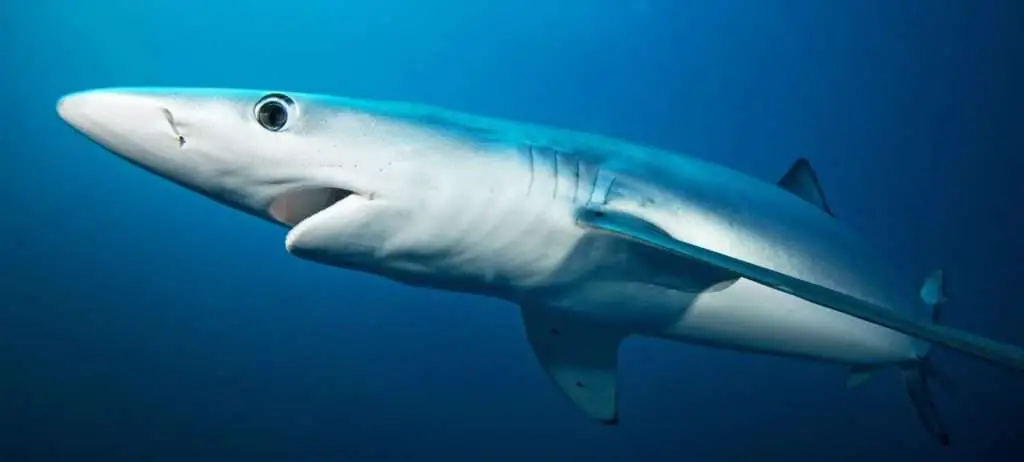
The good news is that you won’t be stalked by a blue shark (Prionace glauca) while frolicking in the waves a few yards from your beach blanket. This aquatic predator prefers to stay in waters that are at least 1,150 feet (350 meters) deep and can grow to be more than 12 feet (3.6 meters) long. Small bony fish like herring and sardines, as well as invertebrates like squid, cuttlefish, and octopus, are found there. It’s also been known to steal from fishermen’s nets and scavenge dead marine animals.
The bad news is that, while blue sharks aren’t known for being particularly aggressive — especially when compared to their nastier cousins, the bull sharks — they won’t turn down a potential meal of human flesh if you’re shipwrecked or floating on your seat cushion after surviving a plane crash.
Blue sharks have been known to circle unlucky people bobbing around in their feeding grounds and take exploratory bites [source: Florida Museum of Natural History]. Blue sharks have been involved in 13 unprovoked attacks around the world, four of which have resulted in deaths [source: ISAF].
Blue sharks, on the other hand, have far more to fear from humans. Humans kill an estimated 10 to 20 million of them each year. Many blue sharks are killed when they become entangled in fishermen’s nets, and others are killed for their fins, which are sold on Asian markets for use in the delicacy shark fin soup [source: Florida Museum of Natural History].
9: Bronze Whaler

The gray-to olive-green coloring of the bronze whaler (Carcharhinus brachyurus) gives it its name [source: ISAF]. Male bronze whalers grow to be about 6.6 to 7.5 feet (2 to 2.3 meters) long, while females grow to be 7.9 feet long (2.4 meters). Bronze whalers have teeth that are hooked outward, broad, slightly rounded snouts, and a bump at the base of the upper caudal fin [source: Shark Research Institute].
They live in temperate waters all over the world, but their populations are dispersed and there is little interaction between them. In New Zealand, Australia, Brazil, and South Africa, where they’re caught in bottom trawls, line gear, and by sport fishermen, the bronze whaler is an important commercial catch for human consumption. Since 1962, the bronze whaler shark has been linked to 15 shark attacks, with only one resulting in a fatality [source: ISAF].
Bronze whalers are frequently seen near the shore, feeding on schooling fish — sometimes even in the surf — putting them in close proximity to humans. For at least part of their range, they migrate seasonally, and along Africa’s southern coast, they tend to follow large groups of migrating sardines. [via Shark Research Institute] They’re active, fast-moving creatures with the ability to leap out of the water.
8: Oceanic Whitetip Shark
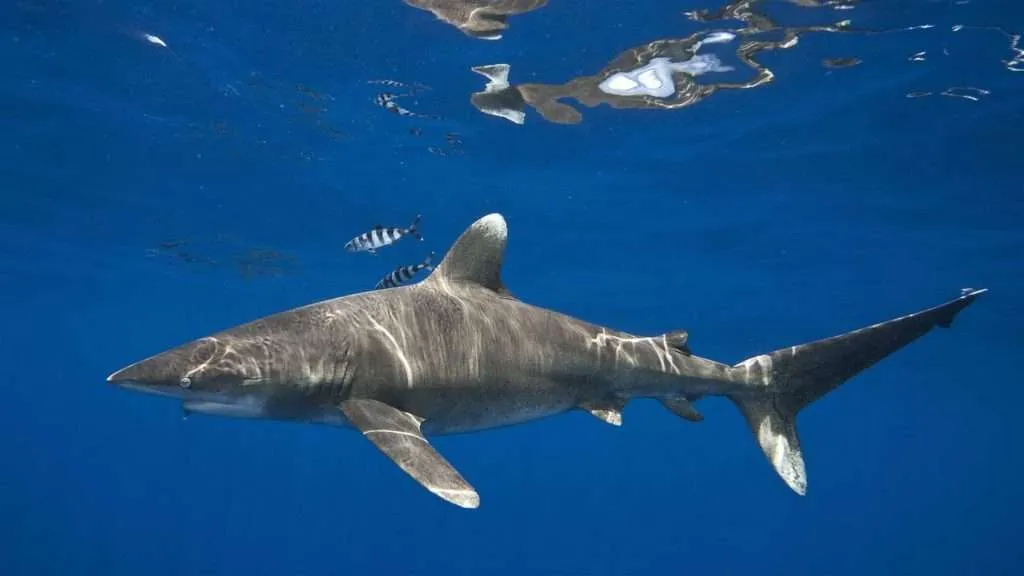
The oceanic whitetip (Carcharhinus longimanus) may only have 12 unprovoked attacks and three fatalities on its record, but that could be because it avoids leaving any evidence of many of its crimes [source: ISAF]. Marine explorer Jacques Cousteau said that the whitetip shark was one of the most dangerous because it was not afraid to attack its prey.
This shark, which lives in deep waters, became a primary enemy during wartime when soldiers were thrown into the water after their transport was attacked. This shark, known for being the first on the scene of a shipwreck, likely devoured many more servicemen than are recorded in the statistics. The whitetip shark, in particular, is thought to have eaten many of the men aboard the Nova Scotia, which sank in World War II and claimed over 800 lives [source: Levine].
One of the most common large fish in the ocean is the whitetip shark. Divers who come across the shark describe it as a shark with attitude and boldness, unfazed by the divers’ defense mechanisms. It investigates divers in a persistent and aggressive manner.
7: Wobbegong Shark
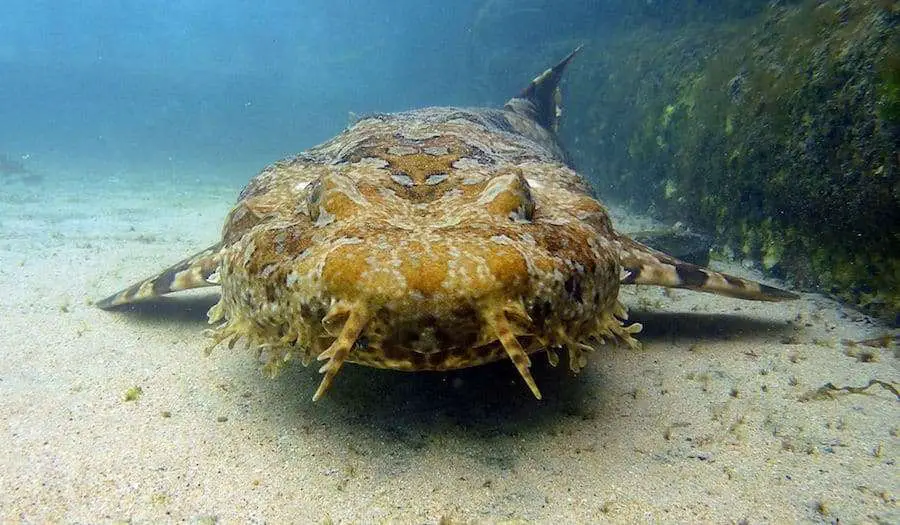
Wobbegong sharks get their name from an Australian aboriginal word that means “shaggy beard,” and is a catchphrase for several species of sharks in the genus Orectolobus. Because of the ornate patterns on their bodies, they’re also known as carpet sharks. Wobbegongs wait for crustaceans and fish to swim by on the ocean floor [source: Smithsonian Ocean].
While wobbegongs don’t appear to be particularly vicious, they’ve been blamed for at least 19 attacks on humans, though no fatalities have been reported [source: ISAF]. The spotted wobbegong (Orectolobus maculatus) is one species that has been reported to be aggressive toward humans, with at least four documented attacks. Divers have been attacked without provocation, and wobbegongs have bitten people who stepped on them or let their arms get too close to their mouths, possibly because they thought the people were fish [source: Florida Museum].
Once a wobbegong has caught a person’s attention, they are adamant about not letting go, which can result in severe lacerations [source: Florida Museum].
Nonetheless, humans pose a greater threat to wobbegongs than vice versa. Trawlers and lobster pots commonly catch them, but spearfishermen kill them as well [source: Florida Museum].
6: Sand Tiger Shark
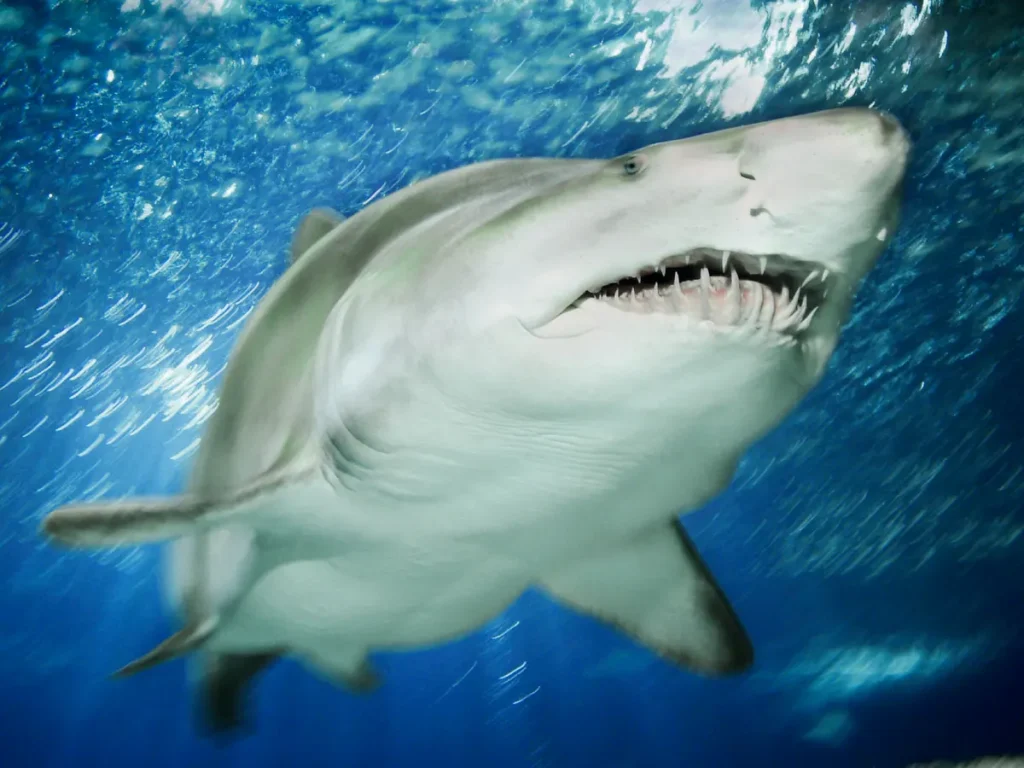
Sand tiger sharks aren’t aggressive toward humans unless provoked, according to researchers, but that’s no comfort if you’re a fisherman and come face to face with the predator’s prominent, jagged-looking teeth [source: Florida Museum of Natural History]. Despite the fact that sand tigers have attacked humans 36 times, none of the attacks have been fatal [source: ISAF].
Except for the eastern Pacific, the species (Carcharias Taurus) can be found in most warm seas around the world. Sand tiger sharks can be found in the western Atlantic Ocean from the Gulf of Maine to Argentina, and are frequently seen in Cape Cod and Delaware Bay during the summer months. They’re most commonly found close to shore, at depths ranging from 6 to 626 feet (1.8 to 190 meters), but they can also be found in shallow bays, coral and rocky reefs, and deeper areas around the outer continental shelves.
Sand tiger sharks are large and bulky, with flattened conical snouts and long mouths that extend behind the eyes, and dark reddish or brown spots strewn across their bodies. Females can grow to be more than 10 feet (3 meters) long, while males are usually just under 10 feet.
Sand tigers, as previously stated, have a voracious appetite for herring, mullets, and rays, among other things, and they sometimes hunt in groups, encircling and bunching their prey. Sand tigers forage for food in the north Pacific, northern Indian Ocean, and Africa’s tropical west coast. Sand tigers are classified as “vulnerable” species by the International Union for Conservation of Nature (IUCN) [source: Florida Museum of Natural History].
5: Blacktip Shark
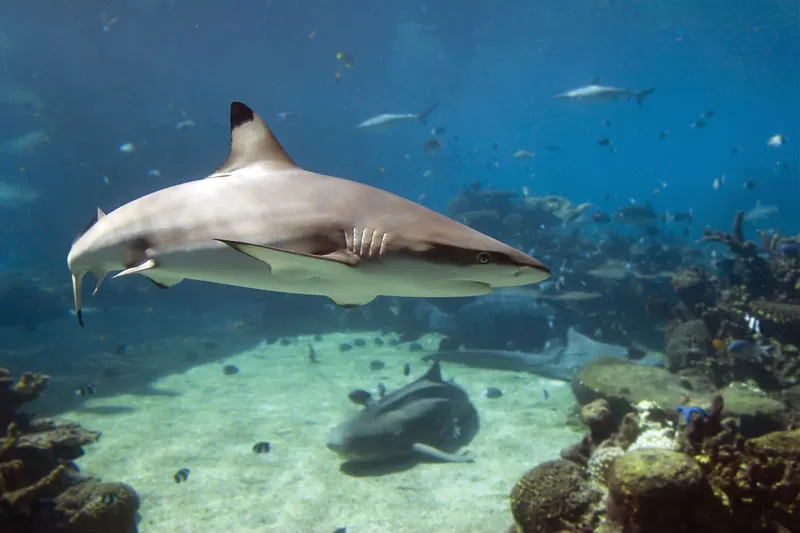
If you’re a Florida surfer, you may already be familiar with the blacktip shark (Carcharhinus limbatus), since the species reportedly inflicts 16 percent of the shark bites on surfing enthusiasts in your state. Blacktips have also chomped on humans along other parts of the Atlantic and Gulf coasts of the United States and off the waters of South Africa and the Caribbean.
If there’s an upside to this, it’s that the species, which prefers depths of around 10 feet (3 meters), only averages about 5 feet (1.5 meters) in length and just 40 pounds (18 kilograms) in weight, and seldom inflicts anything more than a minor wound [source: Florida Museum of Natural History]. To date, there have been 41 documented attacks on humans by blacktip sharks, with no fatalities [source: ISAF].
Though blacktips usually prefer saltwater, they are also often seen near shore around river mouths, bays, mangrove swamps, and in other estuaries. They get their name from the distinctive black markings on the tips of their fins. They have stout bodies with moderately long, pointed snouts and high, pointed first dorsal fins. They’re dark gray-blue or brown on their upper bodies, with white underbellies and a distinctive white band across their flanks.
Blacktips feed primarily on small schooling fish like herring and sardines, but they also eat bigger bony fish like catfish and grouper and have been known to make a meal out of some types of small sharks, stingrays, crustaceans, and squids.
We’d be remiss if we didn’t add that, like many other shark species, blacktips have more to fear from humans than the other way around. They’re caught by fishermen, who sell their meat for human consumption or to be used as fish meal to feed animals. Their fins are also sold in Asian markets for making soup. The IUCN says that blacktips are “near threatened” all over the world and “vulnerable” in the Northwest Atlantic region [source: Florida Museum of Natural History].
4: Requiem Sharks
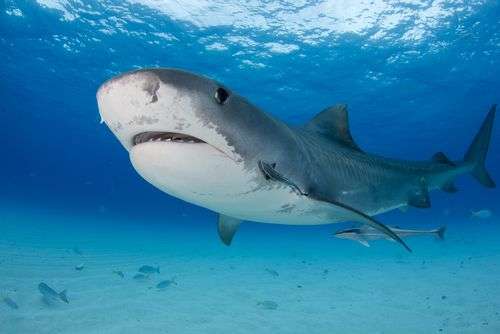
Requiem sharks belong to a family of 12 genera with about 50 species. They have a morbid name, and they can be a lethal threat to spear fishermen in particular. This is because skewered fish that are struggling on a spear emit low-frequency vibrations that requiems can detect with their highly developed sensory organs. Their aggressive instincts can take over once they’ve arrived in the vicinity of the catch and smell blood.
If you happen to be in the water with them, this isn’t a good thing, because the strong-swimming, torpedo-shaped predators, who travel solo or in groups, have large mouths filled with sharp, serrated teeth [source: Randall]. Requiem sharks have been known to attack humans 68 times, with one fatal attack [source: ISAF].
What makes the sharks even scarier is that a few of the requiem species, like the gray reef shark, have distinct threat postures. The sharks will swim laterally, tossing their heads in a threatening manner, arching their backs with their pectoral fins held downward, and snapping their jaws. It’s best to back away slowly if you see a shark doing that. Requiem species vary in size, but the largest can grow to be more than 24 feet (7.3 meters) long, making them the neighborhood bullies [source: Beller].
If there is a silver lining to all of this, it is that requiems are voracious eaters who eat a variety of other animals in addition to humans, such as sharks and rays, squid, octopus, lobster, turtles, marine mammals, and sea birds [source: Randall]. The bull shark, a large and vicious member of the requiem family, is particularly dangerous to humans. That’ll be our next topic.
3: Bull Shark
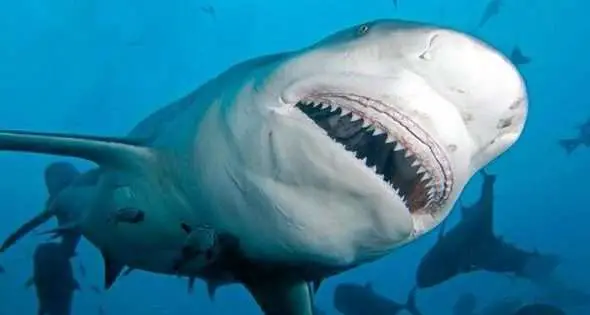
The bull shark has some impressive statistics. The bull shark has already established itself as one of the three most dangerous sharks, with 121 attacks and 26 unprovoked fatal attacks [source: ISAF]. The bull shark is as ferocious as its name suggests.
The tiger shark (Carcharhinus leucas) technically outnumbers the bull shark (Carcharhinus leucas) in terms of attacks and fatalities. However, many researchers believe that the bull shark gets a free pass when it comes to statistics, and that it is actually responsible for many of the attacks attributed to tiger sharks and great white sharks.
The bull shark is dangerous simply because it is more likely than some of the other sharks on our list to come into contact with humans. It can live in both saltwater and freshwater, and the bull has been seen swimming in water that is shallow enough for humans to walk in. Furthermore, because bull sharks are territorial about their territory, a person out for a walk may be agitating them without realizing it.
2: Tiger Shark
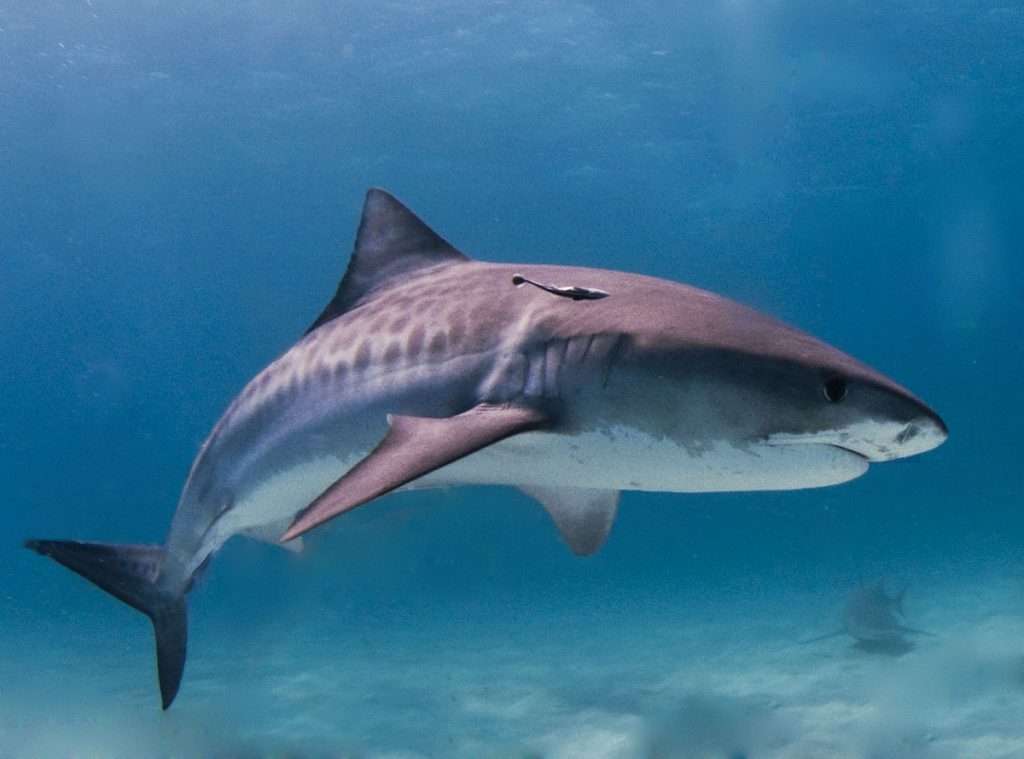
Tiger sharks aren’t specifically looking for humans, but they weren’t looking for lumps of coal, cans of paint, packs of cigarettes, or Senegalese drums either. All of these items have been discovered in the bellies of tiger sharks (Galeocerdo cuvier), which are known for their voracious appetites [source: Parker]. While other sharks may only want a sample to see if a person is edible, the tiger shark is less likely to release a bite once it has taken it.
If a tiger shark decides to keep eating, you’re in for an unpleasant experience, to put it mildly. Their jaws have elastic muscles that allow them to swallow prey pieces much larger than they appear to be capable of. Once you’re in the grip of the tiger shark’s razor-sharp teeth, which can chomp through anything, there’s not much you can do. Despite its hard, protective shell, many a crunchy sea turtle has fallen prey to those teeth.
Those teeth, which can puncture and rip apart prey in a matter of seconds, have been blamed for 138 attacks, 36 of which were fatal [source: ISAF].
Now we’ll move on to the number one shark on the list. You can probably guess what it is if you’ve seen the movie “Jaws.”
1: Great White
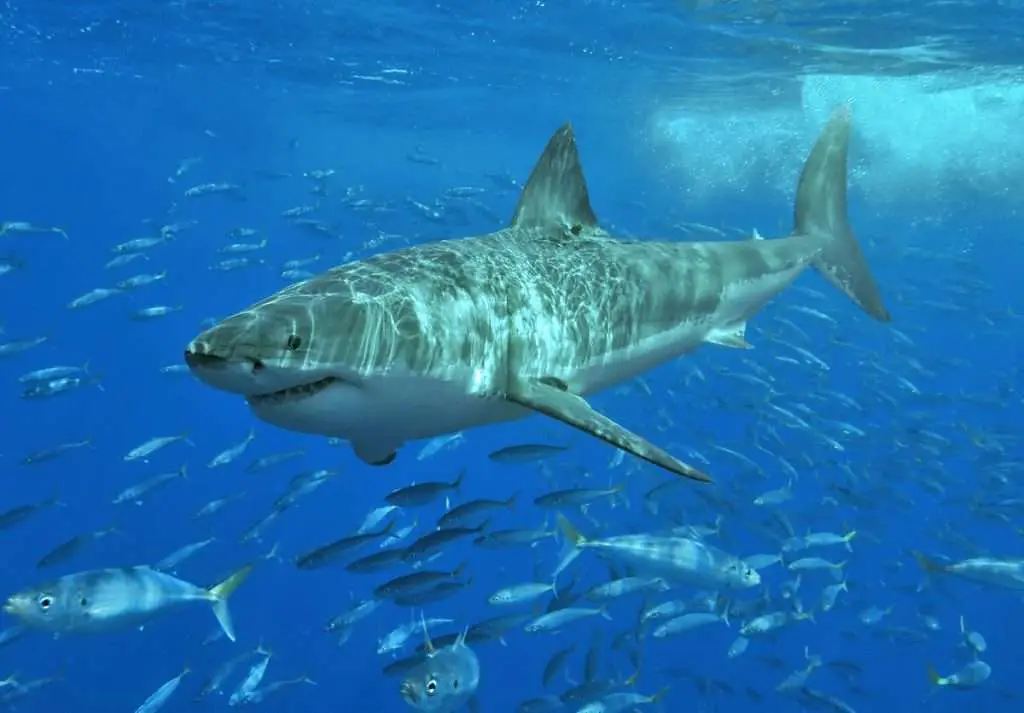
You don’t get to be the subject of a movie like “Jaws” unless you’re also dangerous in real life. Indeed, the great white shark (Carcharodon carcharias) is the shark that kills the most people and boats. The great white shark has been linked to 354 unprovoked shark attacks, with 57 fatalities [source: ISAF].
Peter Benchley, the author of “Jaws,” claimed in 2001 that he couldn’t have written the book now that he knew more about great white sharks [source: McCarthy]. The Great White isn’t the mindless killer it was portrayed to be on the big screen. This shark, on the other hand, is extremely curious and may bite humans to see if they would make a good meal. Humans, on the other hand, aren’t very good food, so they don’t usually come back for seconds. The fatty blubber of seals and sea lions is much preferred by these sharks.
While some scientists believe that great whites mistake surfers for seals, this could simply be a youthful error. According to some researchers, those sharks are most likely juveniles of the species who are just starting to eat seals and sea lions.
It won’t matter whether it’s a case of mistaken identity or not to the unfortunate person who is caught in these infamous jaws. When it comes to being a “taste bite,” the great white can consume 20 to 30 pounds (9 to 14 kilograms) of flesh with each bite, with the force of each bite measuring over 4,000 PSI [source: Brown]. A human could bleed to death or die from internal organ damage with just one bite.
Most swimmers won’t have to worry about coming across a great white shark because they prefer deep waters and are relatively uncommon. However, for some, their elusiveness serves to make them even more terrifying.
Rosie The Shark: Amazing Story Of Preserved Great White Found In An Abandoned Wildlife Park
Rosie the shark would die after breaching their tuna nets, despite the fact that the men who discovered her had no intention of trapping an apex predator. The great white shark, caught off the coast of South Australia in 1997, was a two-ton beast with razor-sharp teeth that would be marveled at for decades. Read More >>>
Source : Wikipedia | How staff works
All the information and photo credit goes to respective authorities. DM for removal please
Read More >>>
Unsinkable Sam, The Cat Who Survived Three Shipwrecks In WWII
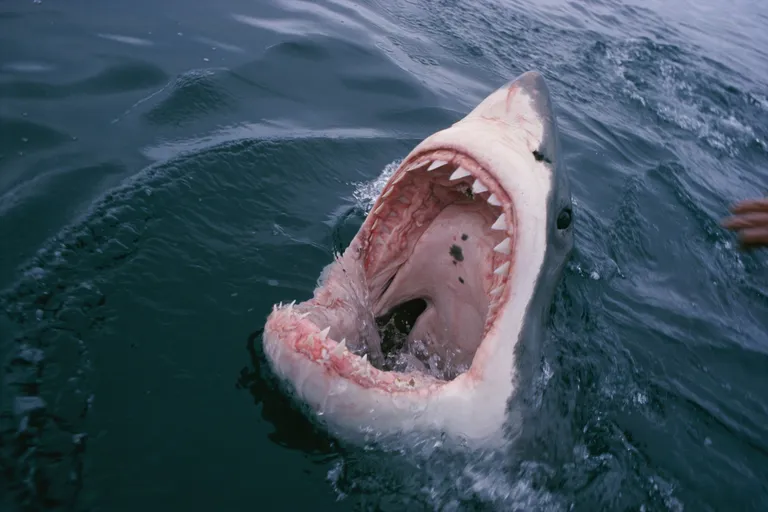

1 comment
I visited many blogs however the audio quality for audio songs existing at
this web site is genuinely superb.